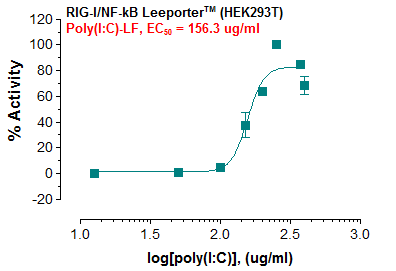Recombinant Human Microtubule-associated Proteins 1A/1B Light Chain 3B/MAP1LC3B
Shipping Info:
For estimated delivery dates, please contact us at [email protected]
| Amount : | 50 µg |
| Content : | Lyophilized from a 0.2 µm filtered solution of 20mM Tris, 150mM NaCl, 2mM DTT, pH8.0. |
| Storage condition : | Lyophilized protein should be stored at -20°C, though stable at room temperature for 3 weeks. Reconstituted protein solution can be stored at 4-7°C for 2-7 days. Aliquots of reconstituted samples are stable at -20°C for 3 months. |
| AA sequence : | GSMPSEKTFKQRRTFEQRVEDVRLIREQHPTKIPVIIERYKGEKQLPVLDKTKFLVPDHVNMSELIKIIRRRLQLNANQAFFLLVNGHSMVSVSTPISEVYESEKDEDGFLYMVYASQETFGMKLSV |
Source: E.coli.
MW :14.8kD.
Recombinant Human Microtubule-associated Proteins 1A/1B Light Chain 3B is produced by our E.coli expression system and the target gene encoding Met1-Val125 is expressed. Microtubule-associated proteins 1A/1B light chain 3B (MAP1LC3B) is a member of the highly conserved ATG8 protein family. ATG8 proteins are present in all known eukaryotic organisms. MAP1LC3B is one of the four genes in the MAP1LC3 subfamily (others include MAP1LC3A, MAP1LC3C, and MAP1LC3B2). It is moat abundantly expressed in heart, brain, skeletal muscle and testis. LMAP1LC3B is a subunit of neuronal microtubule and functions in formation of autophagosomal vacuoles (autophagosomes). It associated MAP1A and MAP1B proteins, which are involved in microtubule assembly and important for neurogenesis. MAP1LC3B also plays a role in autophagy, a process that involves the bulk degradation of cytoplasmic component.
MW :14.8kD.
Recombinant Human Microtubule-associated Proteins 1A/1B Light Chain 3B is produced by our E.coli expression system and the target gene encoding Met1-Val125 is expressed. Microtubule-associated proteins 1A/1B light chain 3B (MAP1LC3B) is a member of the highly conserved ATG8 protein family. ATG8 proteins are present in all known eukaryotic organisms. MAP1LC3B is one of the four genes in the MAP1LC3 subfamily (others include MAP1LC3A, MAP1LC3C, and MAP1LC3B2). It is moat abundantly expressed in heart, brain, skeletal muscle and testis. LMAP1LC3B is a subunit of neuronal microtubule and functions in formation of autophagosomal vacuoles (autophagosomes). It associated MAP1A and MAP1B proteins, which are involved in microtubule assembly and important for neurogenesis. MAP1LC3B also plays a role in autophagy, a process that involves the bulk degradation of cytoplasmic component.
Endotoxin : Less than 0.1 ng/µg (1 IEU/µg) as determined by LAL test.
For Research Use Only. Not for use in diagnostic/therapeutics procedures.
| Subcellular location: | Cytoplasm, Endomembrane system, Cytoplasmic vesicle, Cytoplasmic vesicle |
| Post transnational modification: | Phosphorylation at Thr-12 by PKA inhibits conjugation to phosphatidylethanolamine (PE) (By similarity). Interaction with MAPK15 reduces the inhibitory phosphorylation and increases autophagy activity. |
| Tissue Specificity: | Most abundant in heart, brain, skeletal muscle and testis. Little expression observed in liver. |
| BioGrid: | 123565. 91 interactions. |
|
There are currently no product reviews
|














.png)









